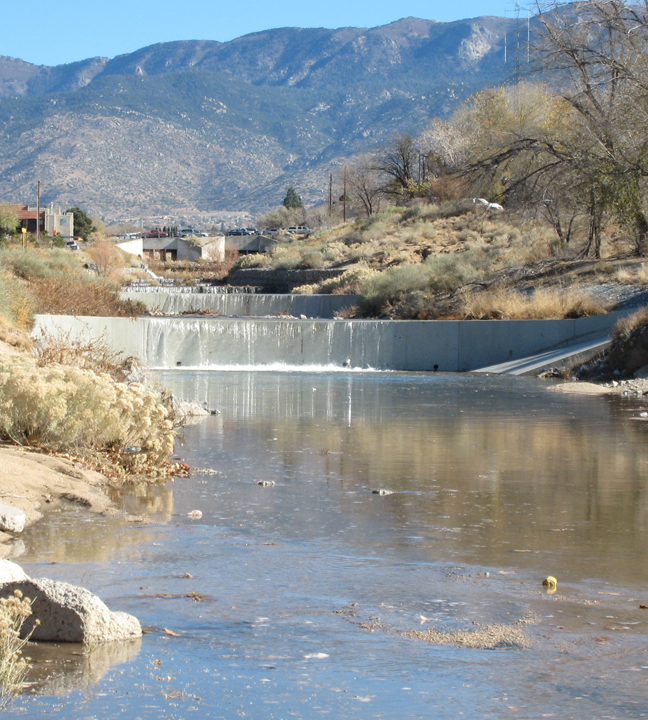3b – Aquifer Storage and Recovery

Aquifer Recharge
Even the San Juan-Chama project, which will draw Albuquerque’s allotment of San Juan-Chama water from the Rio Grande, will require the aquifer as a backup supply in times of drought.
Unfortunately, we can’t always count on San Juan-Chama water. There will be years of low mountain run-off. There will be drought years, and no one can predict the long-term impacts of climate change. That’s why the aquifer will always remain a critical water account, our ace in the hole. That’s why we have to protect it and replenish it.
The Water Authority’s Water Resources Management Strategy calls for a number of measures to ensure the aquifer’s long-term health and prevent the land-surface subsidence that can happen when aquifers are over pumped. These measures include regular monitoring of aquifer levels and identification and protection of natural aquifer recharge zones to ensure maximum recharge and prevent aquifer contamination.
More ambitiously, however, the Water Authority in 2007 initiated a pilot program for aquifer storage and recovery, in which a small amount of San Juan-Chama water was released into the Bear Canyon arroyo and tracked to see if it reached the aquifer. results were positive, and the Water Authority is moving forward with plans to recharge the aquifer on a larger scale.
We will be using direct injection as well as infiltration to get the water into the aquifer.We hope to put up to 40,000 acre-feet back into the aquifer in the first couple of years. After that, we will continue to add purified San Juan-Chama water to the aquifer primarily during winter months when demand is low.”



